24 November in Ireland / Mí na Samhna in Éirinn
Posted by Christine on Dec 1, 2014 in Ireland | 1 comment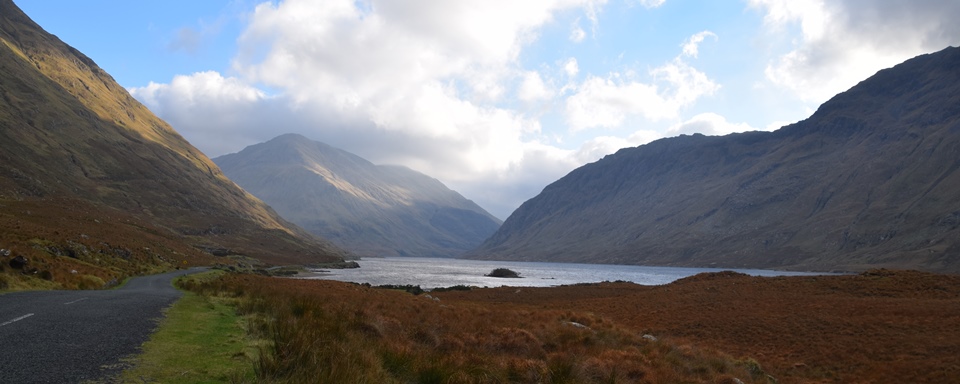
Anyone who has stumbled upon the spot pictured above, Doolough (Black Lake) in County Mayo, knows how beautiful it is at any time of the year. This photo—taken on Tuesday, November 18, 2014—speaks to everything that needs to be said about Ireland in the month of November, Mí na Samhna. The bracken has turned to brown, the heather to unnamable dark shades, the peat-infused water to even more impenetrable black. The green that lingers glows greener than ever. Most of the flowers are gone, yet the color palette has expanded. The hills are coated in warm brown velvet—mole-colored when in shadow—that seems creased and draped with artistry. Shadows are longer, colors have more depth and darkness. And there’s no one—not a tourist, not a sheepherder, not a hiker—in sight.
 As in other Gaelic languages, the word for Halloween, Oíche Shamhna (oíche means “night”), is also the word for November, testifying to the importance of the season in Celtic culture: Mí na Samhna means the “month of Samhain.” The root word Samhain [SOW-en] means “the end of summer” and is the name for one of four festivals marking the seasons of the year: Imbolc, Beltane, and Lughnasa are the others. Samhain and Beltane [BELL-ta-nuh] (May) were the most important and were considered to be times when the barriers between our world and the world of the spirits became porous, so-called “thin” times allowing movement and communication back and forth. That certainly is the mood of November in the many cultures where the Halloween tradition has developed.
As in other Gaelic languages, the word for Halloween, Oíche Shamhna (oíche means “night”), is also the word for November, testifying to the importance of the season in Celtic culture: Mí na Samhna means the “month of Samhain.” The root word Samhain [SOW-en] means “the end of summer” and is the name for one of four festivals marking the seasons of the year: Imbolc, Beltane, and Lughnasa are the others. Samhain and Beltane [BELL-ta-nuh] (May) were the most important and were considered to be times when the barriers between our world and the world of the spirits became porous, so-called “thin” times allowing movement and communication back and forth. That certainly is the mood of November in the many cultures where the Halloween tradition has developed.
Before coming for this twelve-month residence, I had never spent even a day of either February or November in Ireland. I don’t yet know what February will bring, but November is fast becoming my favorite month here.
For one thing, a lot happens in November as far as the look and feel of the day. Remember that Ireland is very far north, at roughly the same latitude as the middle of Hudson Bay. Every day makes a radical move towards darkness. With daylight saving time marking the month (this year DST actually began on October 26, a week before it started in the US), we are suddenly measuring the rapidly diminishing daylight so that we can get 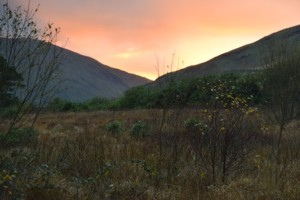 everything we can out of it. When we arrived in June, it stayed light until almost 11 p.m. and the sun was up a few hours later. Because our bedroom blinds didn’t really block out the light, I slept with an eye mask the first few nights until I got used to all that brightness. By contrast, this morning it was dark until after eight; it’s 4:01 p.m. as I’m typing this and the sun is at the horizon, sinking fast. As Ron says, the days are “crashing”—each one reminds us jarringly that we are headed to the shortest day. This is the time of year for thinking about the movements of the celestial bodies and how we are at the mercy of them. I relish the morning and afternoon darkness since I know they are temporary. We’ve got less than eight hours of daylight right now, and I feel a certain exciting pressure to use it to advantage.
everything we can out of it. When we arrived in June, it stayed light until almost 11 p.m. and the sun was up a few hours later. Because our bedroom blinds didn’t really block out the light, I slept with an eye mask the first few nights until I got used to all that brightness. By contrast, this morning it was dark until after eight; it’s 4:01 p.m. as I’m typing this and the sun is at the horizon, sinking fast. As Ron says, the days are “crashing”—each one reminds us jarringly that we are headed to the shortest day. This is the time of year for thinking about the movements of the celestial bodies and how we are at the mercy of them. I relish the morning and afternoon darkness since I know they are temporary. We’ve got less than eight hours of daylight right now, and I feel a certain exciting pressure to use it to advantage.
And we are awake for sunrise and sunset, both made more spectacular by all the moisture in the air.
I studied the sun’s path today; it stays so low in the sky that you can always see it without even looking up—in fact, it stays fairly near the horizon from sunrise to sunset. That means stretched out, El Greco-style shadows all day long, everything accented by “a certain slant of light” to borrow from Emily Dickinson—not great for warming yourself but perfect for taking interesting pictures. Most of the leaves that are going to fall have fallen, and they’re all over the ground, wet and bright, like a patterned carpet. I haven’t seen a leafblower yet. Along with the grass, which really does seem to glow greener as other things turn brown, and all the evergreen shrubs, there are enough pines, firs, hemlocks, hollies, laurels, and palm trees in Ireland to keep the green going all year. Sea, lake, and mountain views open up when the leaves are down. I love to see the naked trees silhouetted against the sky, “bare ruined choirs where late the sweet birds sang.”
All summer long, Dublin is a mob scene, with streets in the city centre and elsewhere packed with people, queues for attractions like the Book of Kells winding around the building, and restaurants filling up with bookings days in advance. All of that eases up in September and October only to wind back up again in December as Christmas approaches. But in November the crowds disappear; you don’t have to fight your way down the street or squeeze into shops. It’s cold but not that cold: the highs for the next ten days range from 46° to 55°F—just cold enough to feel invigorated and to enjoy sitting down with a hot drink. The holiday spirit is already noticeable, with decorations going up and the streets and shops alight.
I’ve covered a good bit of ground already this month from north to west to south in more than half of the thirty-two counties. While not every day was bright, only a few could be called “rainy.” Some mornings, clouds of fog sat in low-lying areas in both city and country. Winter storms won’t threaten until December or later. Most days offered at least some hours of the low-slung sun that beckons the spirits and gives November its moody nature.
I’ll have to figure out a way to come back to Ireland in Mí na Samhna.

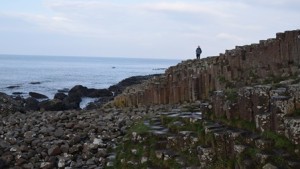
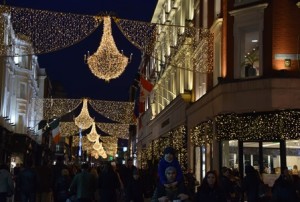
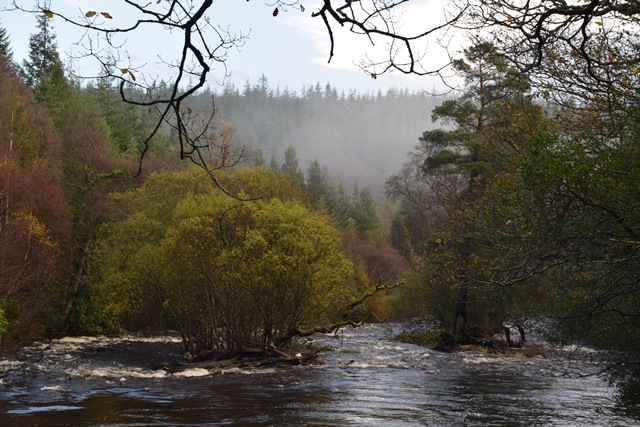
Loving your voice, the Gaelic, and the literary allusions, mixed with Ron and El Greco in this post – the lulling rhythm. Eric’s up for sabbatical next year – well, I can dream can’t I?